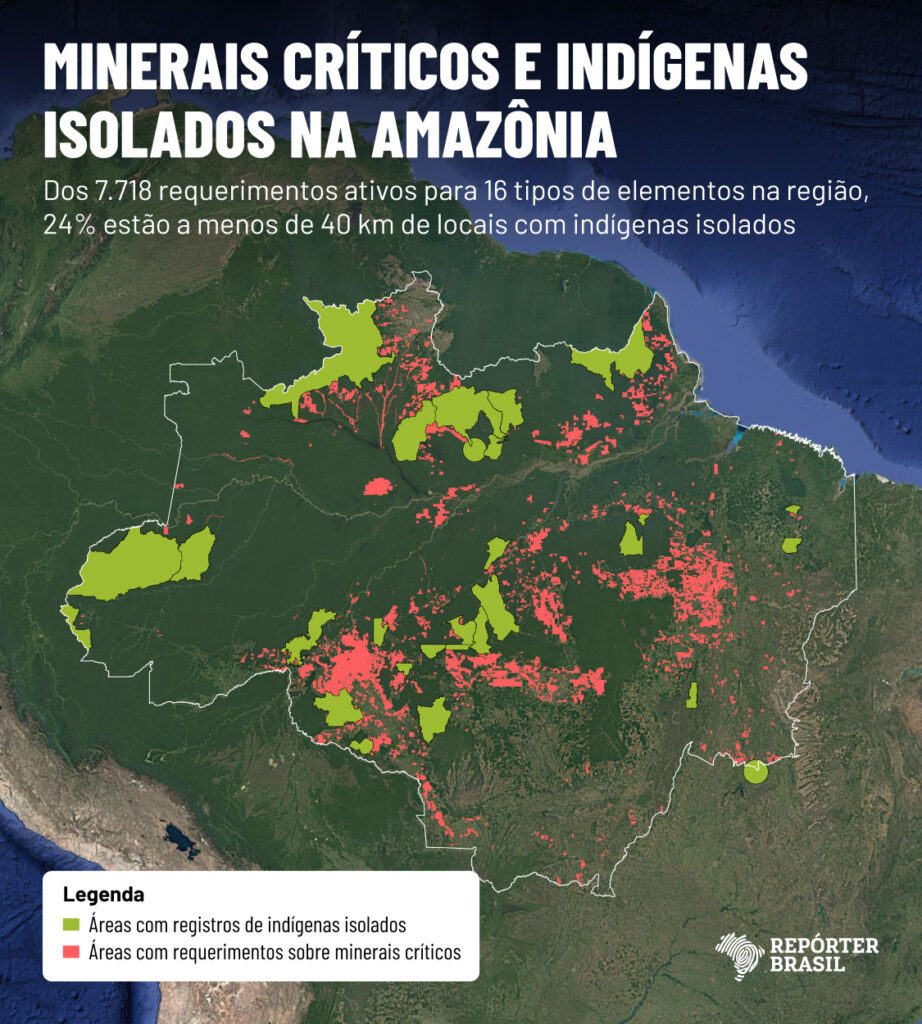MINING companies are seeking to explore minerals crucial to the technology sector close to at least 45 isolated Indigenous groups across Brazil’s Legal Amazon.
An exclusive Repórter Brasil investigation found 1,827 applications to mine copper, lithium, rare earths, and 13 other elements—materials used in products like microchips, wind turbines and electric vehicles—within 40 kilometers of these isolated communities.
Mining at this distance puts Indigenous populations at risk, says the Observatory of Isolated Indigenous Peoples (OPI), an advocacy group. “Isolation is a condition of survival, due to mining, road building and agribusiness,” explained anthropologist Miguel Aparício, OPI’s president, who has worked with isolated groups for more than thirty years.
The 40-kilometer rule is based on scientific research and environmental standards adopted by the OPI. For example, Interministerial Ordinance No. 60 of 2015 states projects like highways or dams can harm Indigenous territories if within this range. For mining, the regulation cites a 10-kilometer threshold, but OPI extends this to 40 kilometers due to isolated peoples’ heightened vulnerability.
Critical minerals and isolated Indigenous peoples in the Amazon: of the 7,718 active applications for 16 types of elements in the region, 24% are located within 40 km of areas with isolated Indigenous peoples (Artwork: Rodrigo Bento/Repórter Brasil)
ASSINE NOSSA NEWSLETTER
document.addEventListener(“DOMContentLoaded”, function() {
document.querySelectorAll(‘.form-news button[type=”submit”]’).forEach(function(botao) {
botao.classList.add(“envio_newsletter_materia”);
});
});
Submit
Most mining permits are at the exploration stage
Researchers identified 7,718 active mineral applications for 16 elements filed from 1953 through September 2025. Of these, 1,827—24%—are very close to areas where isolated Indigenous people live. In fact, 1,226 concern tin alone.
The data also show a recent spike in mineral exploration, with 3,392 permit requests—44% of the total—filed since 2020.
The survey found most permit applications—4,539, o
